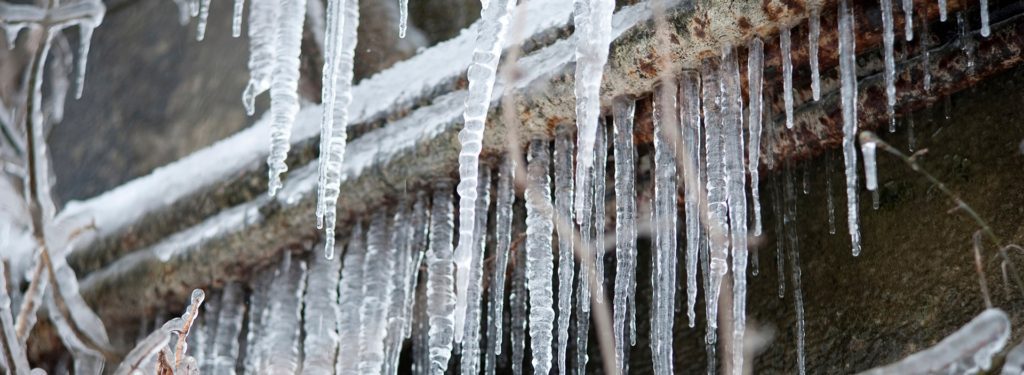Best Ways To Winterize Your Plumbing

If you live in Texas, we all have vivid memories of the freeze of 2021. Many have nightmare stories regarding plumbing issues in the wake of the historic deep freeze that left most of the state frozen with burst pipes and without power for nearly a week. There are several best ways that every home and business owner can take to avoid disaster when the temperature drops. Now is the time to winterize your plumbing- before it’s too late.
Most people don’t realize- pipes don’t burst at the point where water freezes, but somewhere between the freeze and a closed faucet, such as the kitchen faucet or washing machine. When there is a build-up of pressure from the blocked pipe-it has nowhere to go but through the pipe walls, leading to extensive water damage. Winterize your home’s plumbing, stop frozen pipes before they happen, and prevent expensive water damage by adequately insulating the plumbing pipes in your home.
Always Hire a Licensed Plumber
Hire a company with a current Texas plumbing license that is highly rated & Insured. This guarantees a certain skill level and that the license holder is up-to-date on Texas plumbing codes and laws.
Insulate Water Pipes
Structures built for Texas heat are often left uninsulated in peculiar places. Pipe insulation provides your first line of defense against cold temperatures and frozen pipes. Look in your attic- If your house was built before 1990 there’s a chance that the water pipes were run above or below your insulation. Any exposed pipe in an unheated space can burst in a deep freeze. For pipe winterization, add a thicker layer of insulation around your pipes. As a bonus, insulating your pipes will increase your energy efficiency and could lower your monthly electric bill. Schrader Plumbing can come out and take a look at your pipes, let you know which ones may be problematic, and install insulation on them for you. Extra care needs to be taken with pipes that have frozen during previous winters or have been repaired in the last 12 months, as these pipes are more susceptible to damage.
Fix exterior cracks
A water pipe’s worst enemy is freezing air. Look for any cracks or holes along the outside walls and foundation of your home. Filling holes and cracks with caulking and spray foam insulation can help stop the cold air from coming into contact with your water pipes during extremely cold weather. Missing vent covers were responsible for a large percentage of burst pipes in Texas attics and basements last February. (Please note – vented crawl spaces and attics should always have air flowing through them – even in the Winter. This is why homes are insulated between those spaces. Failure to properly vent attics and crawl spaces can lead to moisture issues and mold.)
Keep a dripping faucet
If the weather forecast is predicting freezing temperatures, turn on faucets along the exterior walls to create a small, steady drip. This eliminates the pressure that can build between the faucet and an ice blockage, so even if a pipe freezes, it may not burst.
Hose Bibs
Don’t forget the hose bibs. Hose bibs are normally left unattended, causing them to burst in the middle of the night. Drain hose bibs and insulate with covers. Once this has been completed, deactivate bibs at the shutoff valve.
Locate Your Main Shutoff Valve
Most main valves in Texas are located outside and away from the structure. Locate your main shutoff valve and store the valve key (the tool that’s used to turn the valve itself) in an obvious and easily accessible place. Then if you know a freeze is coming and have the flexibility to do so, you can shut the whole thing down. Don’t forget to run all the faucets to purge the remaining water from the system; no water in the pipes means no ice in the pipes!
What to Do If a Pipe Has Already Burst:
If you happen to see a dreaded geyser, the first thing you should do is shut off the main water supply to minimize flooding. Next, call your plumber.
Immediately dry out by removing as much water as possible using mops, sponges, towels, and a wet/dry vacuum. To minimize mold, mildew, and other moisture-related problems, run a dehumidifier in the space until it’s very dry.
The bottom line is, if a severe cold front is approaching, it’s always good to Have a Plumber on Speed-Dial. Call Schrader Plumbing today at 817-262-0989 so that we can help you with all your cold-weather plumbing woes and winterize your plumbing!!
Categories: Burst Pipes, How to's,By: Michelle Kurcina
Last modified:
Last Modified: December 8, 2022 at 8:16 pm


